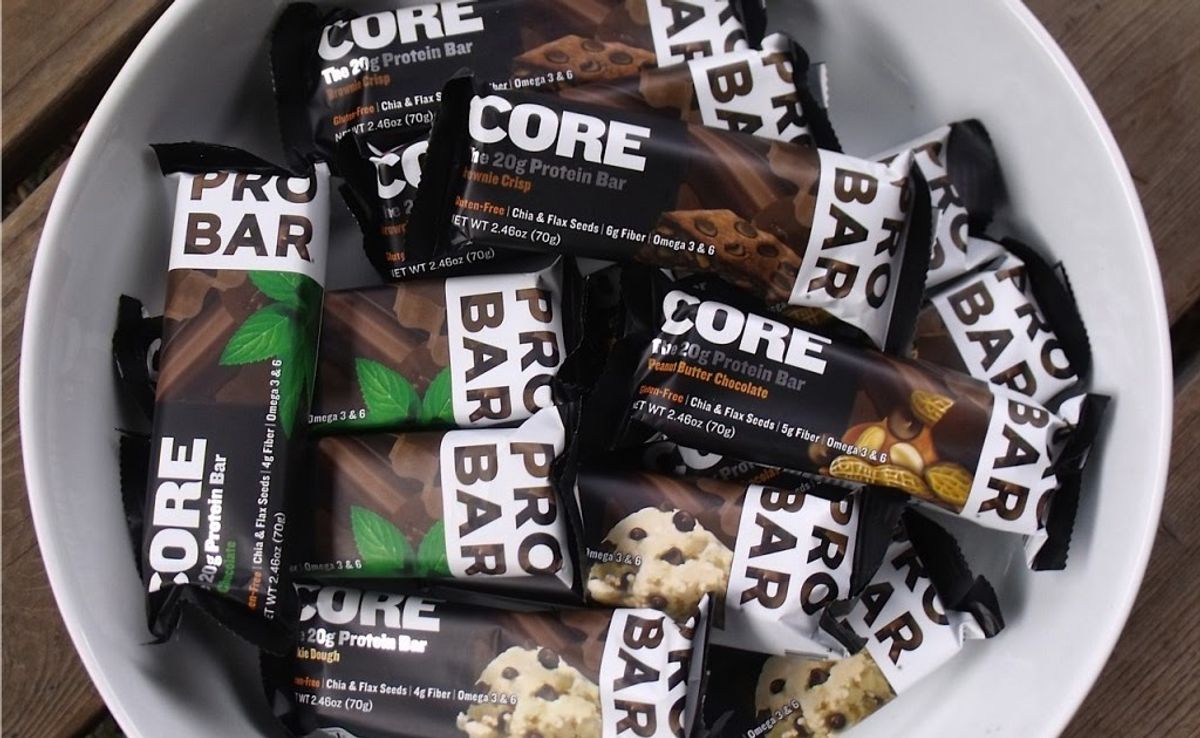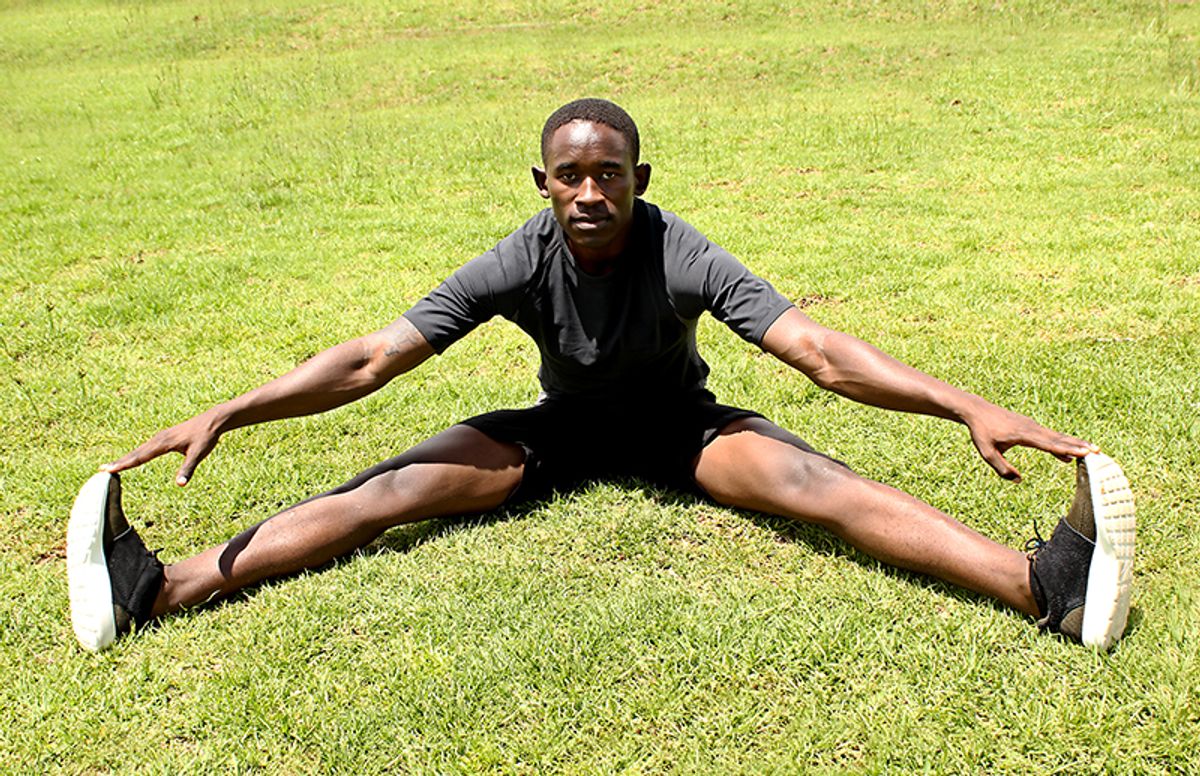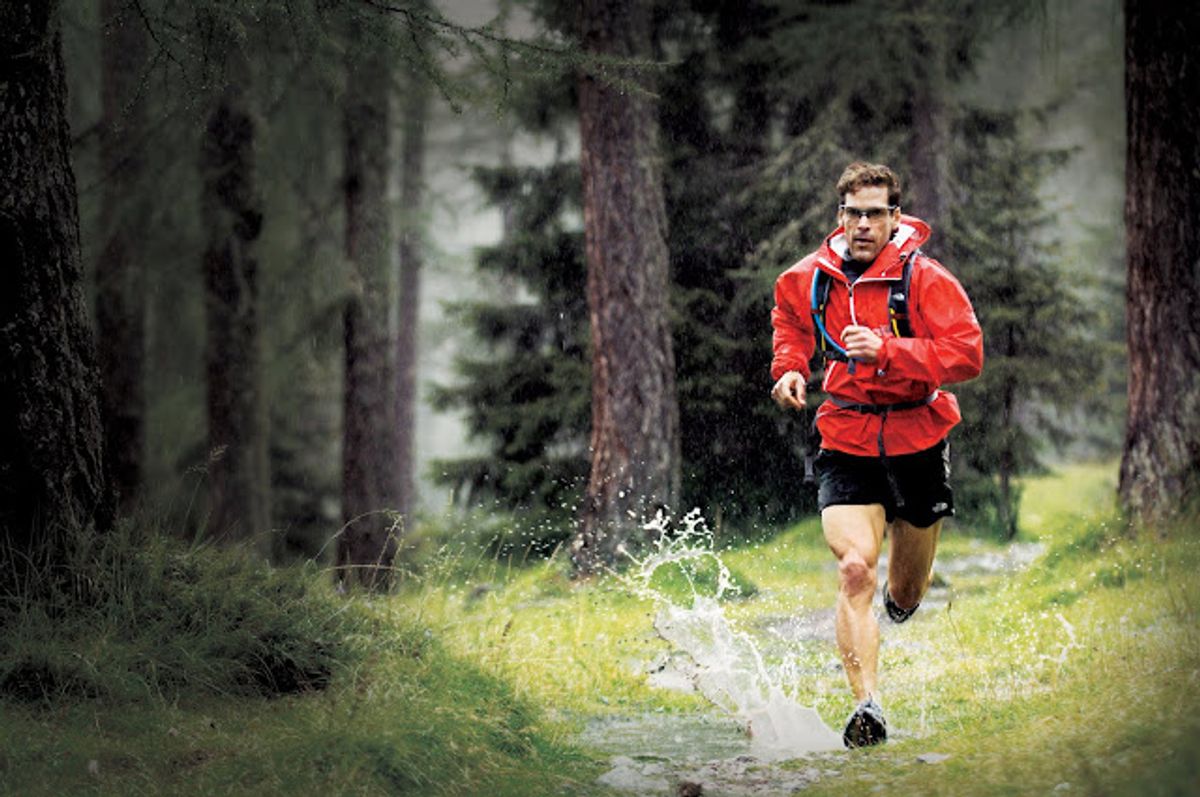
Bouncing Back: Key Strategies for Recovery After an Intense Workout
Cooling Down: Why It's More Than Just Chilling Out

The Science of Slow and Steady
Ever wondered why your coach keeps nagging about cooling down after a killer session? Well, it turns out, they're onto something. Cooling down is crucial for kick-starting your body's recovery process. It's not just about catching your breath; it's about giving your body the transition time it needs.
Gradual cooling down helps maintain blood circulation while preventing muscle stiffness. This means less soreness and a better shot at hitting your next workout with gusto. Here's a quick rundown of what a solid cool-down can look like:
- Begin with 5-10 minutes of low-intensity cardio (think walking or slow cycling).
- Follow up with dynamic stretches that target the muscles you've just worked.
- Finish with deep, controlled breathing to lower your heart rate and calm your nervous system.
Remember, the goal is to decrease body temperature and heart rate gradually, not to stop abruptly and shock your system. This gentle approach can make all the difference in how you feel the next day.
Stretching: Your Muscles Will Thank You
After pushing your limits with an intense workout, your muscles are in a state of high tension. Stretching is the bridge between high-intensity exercise and full recovery, helping to alleviate muscle tightness and soreness. It's not just about touching your toes; it's about giving your muscles the care they need to bounce back stronger.
Dynamic stretches warm up the body and prepare your muscles for the cool-down phase. On the flip side, static stretches are perfect for post-workout because they help to lengthen and relax your muscles. Here's a quick rundown of stretches that can aid in your recovery:
- Dynamic Stretches: Leg swings, arm circles, walking lunges
- Static Stretches: Hamstring stretch, tricep stretch, calf stretch
Remember, stretching isn't a race. Take your time, breathe deeply, and focus on feeling a gentle pull, not pain. This is your moment to tune in to your body and give it the attention it deserves after a tough session.
Breathing Techniques to Bring It Down a Notch
After you've given it your all, it's time to bring your heart rate back to planet Earth. Deep breathing is your ticket to a calmer state post-workout. It's not just about filling the lungs; it's about engaging the diaphragm and tapping into the parasympathetic nervous system to kickstart your recovery.
By focusing on your breath, you're sending a signal to your body that it's time to switch from 'fight or flight' to 'rest and digest'.
Here's a simple routine to get you started:
- Find a comfortable spot to sit or lie down.
- Close your eyes and take a slow, deep breath in through your nose, counting to four.
- Hold that breath for a count of four.
- Exhale slowly through your mouth for a count of four.
- Pause for a count of four before taking your next breath.
- Repeat this cycle for a few minutes, or until you feel your heart rate slowing down and your muscles relaxing.
Remember, like any other part of your workout, breathing techniques get better with practice. So, make it a part of your regular cool-down routine, and watch your recovery times shrink and your next workout performance improve.
Nutrition Know-How: Feeding Your Recovery

Protein Power: Rebuild Those Fibers
After pushing your muscles to the limit, it's crucial to give them the building blocks they need to repair and grow stronger. Protein is the hero of recovery, providing the essential amino acids that act as the raw materials for muscle repair. Not all proteins are created equal, though. Whey, for example, is a fast-absorbing protein that's ideal post-workout.
Consuming protein within 30 minutes to an hour after your workout can significantly enhance the repair process. This window is when your muscles are primed and ready to start rebuilding.
Here's a quick look at some protein-rich snacks that can kickstart your recovery:
- Greek yogurt with berries
- A protein shake with banana
- Cottage cheese and pineapple
- Hard-boiled eggs and whole-grain toast
Remember, recovery isn't just about what you do immediately after your workout, but also what you consume throughout the day. Keep your protein intake consistent to ensure your muscles have a steady supply of the nutrients they need.
Hydration Station: The Role of Water and Electrolytes
Let's talk hydration. After a sweat session, your body is like a sponge ready to soak up nutrients and water. Rehydrating is crucial, not just to quench your thirst, but to help repair your muscles and regulate your body temperature. But it's not just about chugging H2O—electrolytes like sodium, potassium, and magnesium play a VIP role in your recovery game.
- Sodium helps balance fluids in the body.
- Potassium regulates muscle contractions.
- Magnesium is key for muscle repair.
Remember, the goal is to replenish what you've lost through sweat, not to overdo it. Too much water can dilute your body's electrolyte balance, so keep it balanced.
When it comes to rehydration, timing is everything. Sip on water or an electrolyte-rich sports drink after your workout, and continue to hydrate throughout the day. Your pee color? Yeah, it's a pretty good indicator of your hydration level—aim for pale yellow, folks.
Smart Snacking: Timing and Choices Matter
When it comes to refueling your body after a workout, not all snacks are created equal. Timing is everything when you're looking to maximize recovery. A snack packed with the right nutrients, consumed within the golden window of 30 to 45 minutes post-workout, can kickstart muscle repair and replenish energy stores.
Quality is just as crucial as timing. Your body craves a mix of protein, carbs, and healthy fats to recover properly. Here's a quick rundown of some smart snack options:
- Greek yogurt with berries and a drizzle of honey
- A banana with almond butter
- Whole-grain toast topped with avocado and poached egg
- A small handful of nuts and dried fruit
Remember, the goal is to provide your body with what it needs to repair and rebuild without overdoing it. A well-chosen snack can be a powerful ally in your recovery arsenal.
Sleep and Recovery: Dreaming of Stronger Muscles

The Sleep-Growth Connection
Ever wondered why you feel like a superhero after a solid night's sleep? That's because sleep is when your body goes into overdrive repairing and building muscle. Quality Zzz's are as crucial as the workout itself for muscle recovery.
During the deep stages of sleep, your body releases growth hormone, which is essential for muscle repair. Without enough shut-eye, you're shortchanging your gains and extending recovery time. Here's a quick rundown of how sleep stages impact muscle growth:
- NREM Stage 3: This is the deep sleep stage when growth hormone is released.
- REM Sleep: Brain activity ramps up, consolidating memories and skills, including those from your workout.
Remember, it's not just about the quantity of sleep, but the quality. Make sure your sleep environment is cool, dark, and quiet to promote restorative sleep.
And don't forget, a consistent sleep schedule helps regulate your body's internal clock, so try to hit the hay at the same time every night. Your muscles will thank you in the morning!
Creating a Snooze-Inducing Environment
Transforming your bedroom into a sleep sanctuary can significantly enhance the quality of your rest. Keep the room cool, dark, and quiet to promote uninterrupted slumber. Consider investing in blackout curtains and a white noise machine to block out external light and sound. The right atmosphere can make all the difference in falling and staying asleep.
Temperature plays a crucial role in sleep quality. Your body naturally cools down as you drift off, so a cooler room can encourage this process. Here's a quick guide to setting up your sleep haven:
- Temperature: Aim for a cool 60-67 degrees Fahrenheit.
- Lighting: Use dim, warm lights before bedtime.
- Noise: Minimize disruptions with earplugs or white noise.
- Comfort: Invest in a supportive mattress and pillows.
Remember, your bedroom should be a dedicated space for rest. Keep work materials and electronics out to strengthen the mental association between your bedroom and sleep.
Creating a routine that signals to your body it's time to wind down is also key. Whether it's a warm bath or a few minutes of reading, find what works for you and stick to it. Consistency is king when it comes to cultivating a snooze-inducing environment.
Nap Time: Quick Fixes for the Sleep-Deprived
Ever feel like a zombie after a killer workout because you skimped on sleep the night before? You're not alone. Napping can be a game-changer for recovery, giving your body a brief respite to repair and rejuvenate. But not all naps are created equal. Here's how to get the most out of those precious Z's:
- Keep it short: Aim for a 20-30 minute snooze to avoid grogginess.
- Time it right: Early afternoon is prime naptime to prevent interference with nighttime sleep.
- Set the scene: Dim the lights and find a quiet, comfortable spot.
Remember, napping isn't a substitute for a good night's sleep, but it can help bridge the gap on those days when you're running on empty. And hey, if Albert Einstein and Leonardo da Vinci were fans of the power nap, who are we to argue?
While you can't bank sleep, a strategic nap can pay off with interest in the form of improved alertness and performance. Just make sure it's a pit stop, not a detour, on your road to recovery.
Active Recovery: Keep Moving to Improve

Low-Impact Activities That Boost Recovery
After pushing your limits with a high-intensity workout, your body deserves some TLC, and what better way to give it just that than with low-impact activities? Walking, for instance, is a fantastic way to keep the blood flowing without overtaxing your system. It's like telling your muscles, 'Hey, we're still in this together, but let's take it easy.'
Swimming is another champion of recovery. It's not just a way to cool off; it's a full-body workout that's as gentle as it is effective. The buoyancy of water means less stress on your joints, and the resistance helps maintain muscle tone.
- Yoga: Stretch and strengthen with a side of zen.
- Cycling: Pedal away the soreness at your own pace.
- Pilates: Core-focused and posture-perfecting.
Remember, the goal isn't to set records but to aid recovery. These activities should feel like a soothing balm for your weary limbs, not another round in the ring.
Cross-Training: Variety is the Spice of Life
When it comes to recovery, cross-training isn't just about breaking the monotony—it's about enhancing your overall fitness and preventing overuse injuries. Mixing up your workouts can keep things fresh, challenging your body in new ways and promoting balanced muscle development.
Cross-training allows you to engage different muscle groups, which can be especially beneficial when certain muscles need a break. For instance, if you're a runner, try cycling or swimming to reduce the impact on your joints while still maintaining your cardio fitness.
- Swimming: Low-impact and great for all fitness levels
- Cycling: Builds leg strength without the pounding of running
- Yoga: Increases flexibility and core strength
- Pilates: Enhances body alignment and muscular balance
Remember, the goal of active recovery is to move enough to stimulate blood flow and aid in the repair process, but not so much that you risk further fatigue or injury. Listen to your body and choose activities that feel rejuvenating, not draining.
Listening to Your Body: When to Push and When to Pause
Tuning into your body's signals is crucial for effective recovery. Knowing when to push through fatigue and when to take a breather can make all the difference in your fitness journey. It's not just about physical cues; it's about listening to the whispers before they become screams.
- Push when you feel good, your energy levels are high, and you're motivated.
- Pause if you experience pain, excessive fatigue, or any signs of overtraining.
Remember, recovery isn't a race. It's a balancing act that requires patience and self-awareness. Don't rush the process; your body will reward you with better performance and fewer injuries in the long run.
Understanding your body's needs is an ongoing process. Keep a recovery journal to track how you feel after different types of workouts and recovery methods. This can help you identify patterns and tailor your recovery strategy to your unique needs.
Mind Matters: The Role of Mental Health in Physical Recovery

Stress and Recovery: Finding Your Zen
After an intense workout, your muscles aren't the only things that need to recover—your mind does, too. Stress can be a major roadblock in your recovery process, making it harder for your body to heal and build strength. But don't worry, finding your zen isn't as elusive as it sounds.
- Take deep breaths and focus on calming your mind.
- Dedicate time to activities that relax you, like reading or taking a warm bath.
- Practice mindfulness or meditation to clear your headspace.
Remember, a relaxed mind promotes a healthier body. By reducing stress, you're paving the way for a more effective recovery.
Incorporating stress-reduction techniques into your routine isn't just about feeling good—it's about giving your body the optimal environment to repair and grow stronger. So next time you're feeling wound up after a workout, take a step back and give yourself the mental care you deserve.
Visualization and Mindfulness: Mental Techniques for Physical Gains
Ever imagined yourself crossing the finish line with a new personal best? That's the power of visualization at work. Athletes across the board use this technique to enhance performance and recovery. By mentally rehearsing your success, you're priming your brain to drive your body towards that goal.
Visualization isn't just daydreaming; it's a focused practice that can reduce stress and improve concentration. Here's how to get started:
- Find a quiet space where you won't be disturbed.
- Close your eyes and take deep breaths to center your mind.
- Picture yourself achieving your fitness goals in vivid detail.
- Feel the emotions associated with your success.
Mindfulness, on the other hand, is about being present in the moment. It's a form of meditation that can help you tune into your body's needs and recover more effectively. By paying attention to your thoughts and sensations without judgment, you can foster a deeper connection between mind and body, which is crucial for healing and growth.
The Power of Positivity: Keeping Your Head in the Game
Maintaining a positive mindset isn't just feel-good fluff; it's a crucial component of your recovery toolkit. Your attitude can significantly influence your physical healing process. A positive outlook helps you stay motivated, manage pain, and keep setbacks in perspective.
- Believe in your ability to recover
- Celebrate small victories along the way
- Keep a gratitude journal to remind yourself of progress
Remember, recovery is as much about nurturing your mind as it is about repairing your muscles. Stay positive, and your body will follow suit.
So, next time you're feeling down about a slow recovery, flip the script. Focus on what you can do, not what you can't. Positivity is contagious – spread it around, and you'll find that your recovery journey feels a little lighter.


